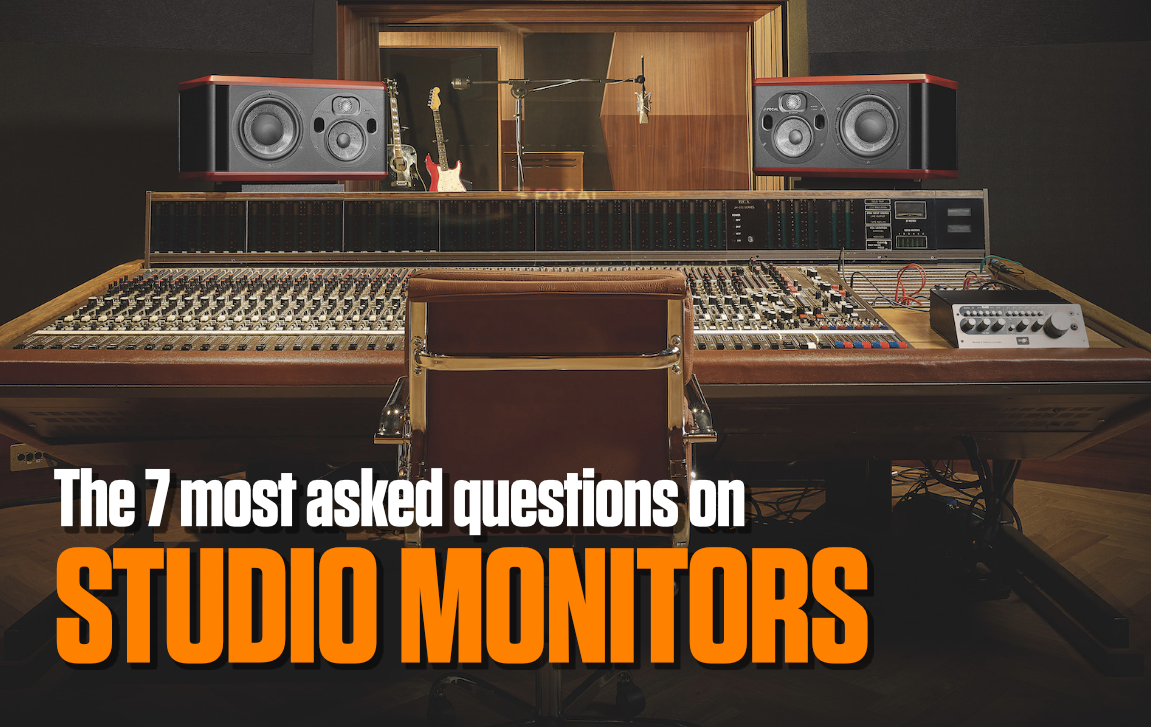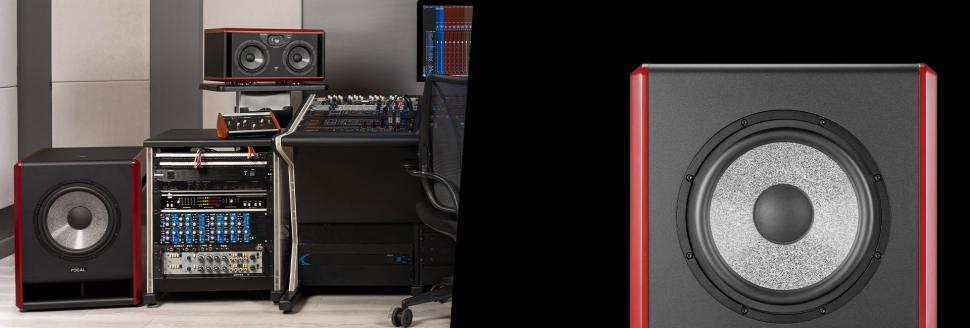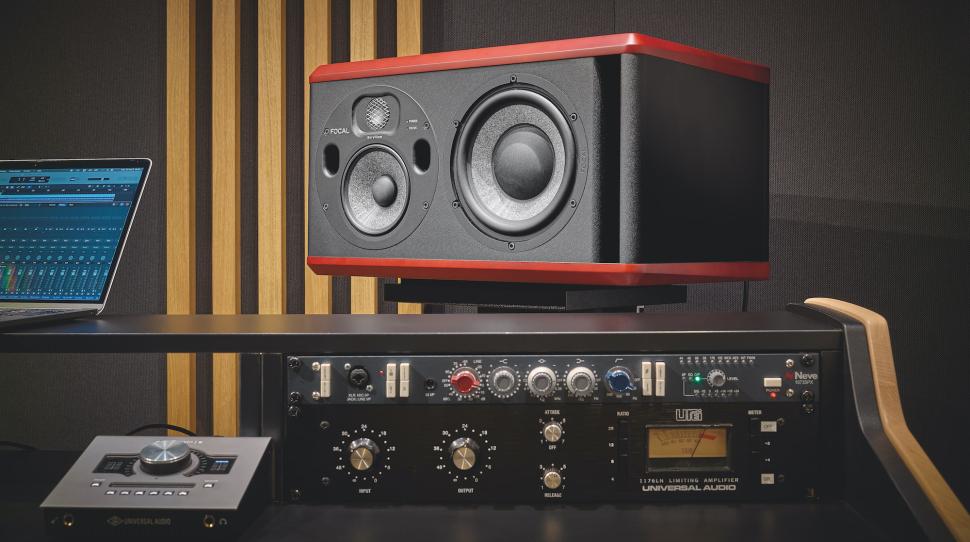The 7 most important questions about studio monitors – solved!

1 | Why is a linear frequency response important for studio monitors?
While hi-fi loudspeakers require a beautifully colored character, the frequency curve of studio monitors should be as linear and even as possible. This allows precise and genuine reproduction of the audio material without excessive emphasis or attenuation of certain frequencies.
2 | What is the difference between near and midfield monitors?
The main difference lies in their size and their radiation behavior. Nearfield monitors are smaller and have a wider beam angle, making them ideal for small studios. Since they are designed for listening distances (1-2 meters), they minimize room reflections. Midfield monitors are larger, have narrower beam angles and are suitable for larger studios and a greater listening distance (2-4 meters). Which option is best for you depends on the size and acoustics of your studio.
3 | Are 2-way or 3-way speakers a better choice for monitoring?
2-way monitors integrate one speaker for the highs and one for the lows, while 3-way studio monitors also have one for the mids. Due to their simpler construction, 2-way systems are usually more cost-effective and require less space. Compared to 3-way systems, they are less prone to phase problems. 3-way studio monitors offer extended frequency coverage, more pronounced bass and higher performance, which is an advantage in larger studios.

Adding to the topic: FOCAL Sub12 subwoofer
The Sub12 is an excellent addition to Focal‘s ST6 studio monitor series and, thanks to its flexible connection and customization options, is also ideal as a complement to other studio monitors. Its powerful and transparent sound makes it an excellent choice for sub-bass-heavy music genres such as Deep House, Drum & Bass, Dubstep or film music.
Find out more about the Sub12 subwoofer on the FOCAL website.
4 | Do I need a subwoofer?
Especially if you use smaller studio monitors, a high-quality subwoofer is a useful addition so that you can really hear and feel the low frequencies that are so important for club music. It is important that the main speakers and the subwoofer are well matched. Since the main speakers then only reproduce the mids and highs and no longer the particularly high-energy bass, their sound reproduction is cleaner and less distorted.
5 | Why do many studios use hi-fi speakers in addition to studio monitors?
While studio monitors are designed for precision and neutrality, hi-fi speakers often offer a sonic coloration that is more similar to listening to music in different environments. This allows you to ensure that your music sounds good on different playback devices.
6 | How important are design and material for the sound of tweeters?
Design and material have a significant influence on tweeters. For example, the inverse dome design of Focal‘s studio monitors enables greater dispersion and higher dynamics. Tweeters made of beryllium are still a relatively new development. This material is characterized by greater rigidity with the same mass compared to aluminum and titanium, which enables more precise high-frequency reproduction.

Adding to the topic: Focal Trio 6
The active studio monitor Focal Trio6 offers the unique option of switching between a one-way, two-way and three-way configuration using a foot switch. This allows you to easily check how your mix translates to different monitoring systems. The speaker can be positioned horizontally or vertically and features a beryllium dome tweeter, a 5-inch midrange driver and an 8-inch subwoofer for first-class sound quality. This makes the Trio6 ideal for extended mixing sessions thanks to its transparent and detailed sound.
Find out more about the Trio6 on the FOCAL website.
7 | What should I bear in mind when positioning studio monitors?
Ideally, the speakers should be placed about 1.5 meters away from walls or corners to avoid excessive bass reflections. For the optimum listening position between the monitors, an equilateral triangle with the listener‘s head as the apex is recommended, with the tweeter positioned at ear level. The decision as to whether you set up your studio monitors horizontally or vertically depends on your room and the speaker arrangement. In order to avoid resonance from the table top or floor, they should be acoustically decoupled from the surface using foam mats, for example.

Do you want to go deeper into monitoring and recording?
Then maybe have a look into the monitor boxes feature in Beat issue #206: We have never had a more comprehensive special on the subject of active speakers: We examine almost every active box available and present it with strengths, weaknesses and suitability. In recent months, many manufacturers have surprised us with new concepts, technical innovations and great sound. So it‘s time to pick out the best of them, so you can find the right monitor for you and your studio and take your sound to the next level.
Find Beat issue #206 in our Falkemedia-Shop.
Want more? Get more!



Subscribe to the digital edition of BEAT Magazine via Plugins-Samples.com and get more gear, in-depth workshops, reviews and 11 GB exclusive plugins and new sounds with every monthly issue!
Subscribe to Beat Magazine for only 4.99€ per month
